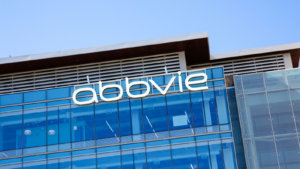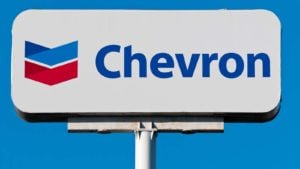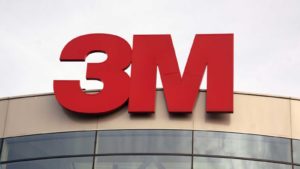Take the second one, for instance, with its products’ expansion and consistent performance in retirement-focused investment solutions. Similarly, the fourth one has strategic investments in traditional and new energies. These aren’t just companies. They are pillars of reliability, consistently rewarding shareholders. Meanwhile, they are strategically maneuvering through an evolving market and economic space.
From the seventh one’s financial health, marked by consistent revenue surpassing $100 billion annually, to the fifth’s efficiency gains and debt reduction strategies, these dividend aristocrats offer not just dividends but their resilience, adaptability and enduring capacity to generate passive income.
Read more to explore these income generators, each with its unique strategy and potential.
Procter & Gamble (PG)

Procter & Gamble (NYSE:PG) is attached to a forward dividend of 2.57%. It has provided dividend growth for 67 years with a 5-year growth rate of 5.63%. The key fundamental in play here is the company’s geographical expansion-based performance.
In detail, P&G’s growth across five out of seven regions (Q1 fiscal 2024), especially the substantial growth in focus markets like the US and Europe (15% growth), demonstrates the company’s ability to penetrate and thrive in different global markets effectively. It also reflects its agility in adapting strategies to suit regional consumer behaviors and market dynamics.
Despite challenges in Greater China, P&G’s strategies to navigate soft market conditions and temporary reductions in certain segments like SK-II showcase the company’s resilience and ability to tailor strategies to address specific regional challenges.
Additionally, P&G saw a gain of 0.40% in global aggregate value share and improvement in US outlet value share by 0.50%. Finally, despite the challenging market conditions, the increase in volume share by 60 basis points in the US reaffirms P&G’s strength in capturing market share through compelling product offerings and marketing strategies.
T. Rowe Price (TROW)

T. Rowe Price’s (NASDAQ:TROW) forward dividend yield is 4.53% with a history of dividend growth for 37 years. The dividends are attached to a historical growth rate (5 years) of 11.75%. Fundamentally, the leads of T. Rowe Price’s target date products and the expansion of its ETFs suggest the company’s capacity to capitalize on opportunities in the investment market.
Additionally, the company’s target date products have robust performance. They consistently rank in the top quartile versus peers, indicating the effectiveness of T. Rowe Price’s active security selection and portfolio construction methodology. This sustained effectiveness in performance established the company as a reliable provider of retirement-focused investment solutions.
Finally, T. Rowe Price’s achievement of $1.7 billion in assets under management (AUM) for ETFs by Q3 2023 and broker/dealer placements highlight the market’s positive response to the company’s ETF offerings. Hence, this expansion represents a strategic move to capture a growing segment of investors seeking diversified, cost-effective investment vehicles.
AbbVie (ABBV)

AbbVie (NYSE:ABBV) offers a forward yield of 4.00%. The company has maintained a dividend growth rate for 51 years. Historically, it has provided a 5-year growth rate of 10.52%. Fundamentals that support dividend sustainability include AbbVie’s flagship products, Skyrizi and Rinvoq, which exhibited exceptional revenue growth, each experiencing over 50% growth.
Furthermore, Skyrizi’s solid performance was evident in its leadership in capturing a substantial share of the psoriasis and psoriatic arthritis markets. Similarly, Rinvoq delivered remarkable growth potential in gastroenterology, especially in ulcerative colitis and Crohn’s disease.
Another key player, Vraylar, demonstrated robust growth, achieving a sales increase of 35.4%. This growth is based on a significant uptick in new prescriptions across various indications, especially following its approval as an adjunctive treatment for major depressive disorder.
Chevron (CVX)

Chevron (NYSE:CVX) delivers a dividend yield of 4.05% with a 36-year history of dividend growth. The company also has a 5-year growth rate of 6.16%. Chevron has returned over $5 billion to shareholders for six consecutive quarters.
At the core of its operations, Q3 2023 oil equivalent production sequentially increased by 6%, mainly due to legacy PDC production. However, non-operated production in the Permian was lower. Tengizchevroil’s production is expected to be lower in 2024 due to turnaround schedules and Wellhead Pressure Management Project conversions, but the production may surpass 1 million barrels per day in 2025 upon the Future Growth Project’s full ramp-up.
Specifically, the company achieved a return on capital employed of over 12% for nine consecutive quarters, showcasing efficient capital utilization and profitability. Lastly, Chevron strategically invested in traditional and new energies, as exemplified by closing the PDC Energy (NASDAQ:PDCE) acquisition and acquiring a majority stake in a green hydrogen production and storage hub in Utah.
3M (MMM)

3M (NYSE:MMM) boasts a 5.49% forward dividend yield. The company has offered progressive dividends for 65 years. 3M has recently solid improvements in operating margins across its business segments €” showing this growth is likely to continue.
For instance, in Q3 2023, the 1.60% YoY increase in company-wide adjusted operating margins to 23.2% demonstrates efficiency gains. Notably, certain segments, such as safety and industrial, demonstrated even more significant margin expansions, reaching 25.7%.
To back up dividend sustainability, the company has a substantial 39% YoY increase in free cash flow, reaching $1.9 billion in Q3. The specific drivers behind this growth include working capital management strategies, inventory optimization efforts and initiatives to accelerate cash conversion cycles.
Despite returning value to shareholders, 3M reduced its net debt by 11% YoY, indicating prudent debt management strategies. Thus, this debt reduction enhances the company’s financial flexibility, enabling investments in growth initiatives and the ability to navigate looming legal matters effectively.
Exxon Mobil (XOM)

Exxon Mobil (NYSE:XOM) provides passive income through a 3.80% forward dividend yield. The dividends have been increasing for 25 years back to back.
The company’s emphasis on operational efficiency can be seen in its attainment of the highest Q3 refinery throughput on record, driven by the Beaumont refinery expansion. This expansion, providing 250K barrels of new capacity per day, demonstrates Exxon Mobil’s focus on meeting growing market demands for energy products.
Additionally, the Baytown chemical expansion start-up, adding 750K tons per year of new performance chemical capacity, including 350K tons of linear alpha olefins, represents the company’s strategic entry into a growing market segment. These initiatives highlight Exxon Mobil’s ability to capitalize on opportunities for organic growth and diversification.
Finally, the consistent focus on operational efficiency, process optimization and capacity expansion reflects the company’s focus on maximizing productivity and shareholders’ returns.
Target (TGT)

The last one on the list, Target (NYSE:TGT), yields 3.09% on a forward basis. The dividend payments have been growing consistently for over five decades (55 years). The current long-term dividend growth rate is 11.59%. Its robust revenue stream suggests that Target’s financial health is solid, consistently surpassing $100 billion annually. This substantial revenue figure demonstrates the company’s strong market presence and widespread consumer appeal.
Over the years, Target has been able to attract and retain customers across multiple product categories, resulting in a steady and significant flow of revenue. This consistent revenue growth reflects Target’s strategies in catering to retail expectations by offering diverse product ranges and a compelling shopping experience.
Finally, one of the fundamentals reflecting Target’s growth potential is its remarkable increase in EPS. Target achieved an EPS growth of over 40% (Q3 2023) compared to 2022 and more than 26% higher EPS than 2019. Hence, the growth in EPS signifies the company’s effective strategic investments that lead to enhanced profitability.
As of this writing, Yiannis Zourmpanos held a long position in MMM. The opinions expressed in this article are those of the writer, subject to the InvestorPlace.com Publishing Guidelines.
